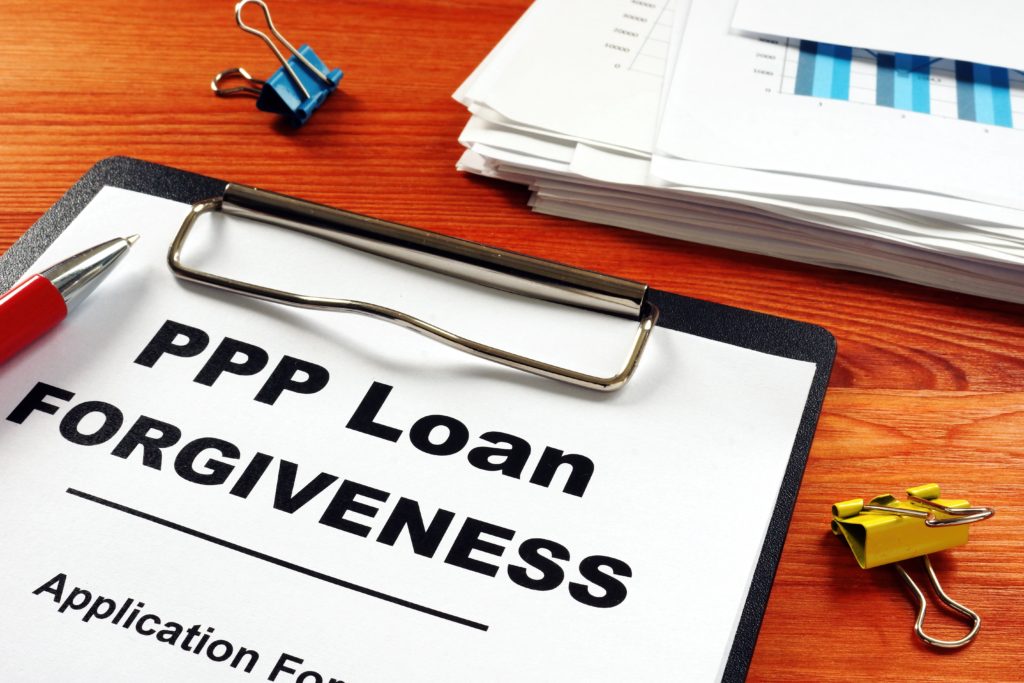The Paycheck Protection Program (PPP) was hailed as a vital lifeline for business owners during the ongoing COVID-19 situation. One of the real carrots of this program was that you could get the loan forgiven if you followed all the guidelines and maintained payroll levels as well as the size of your workforce.
However, this program was rolled out quickly. Given that, there’s been a fair amount of confusion, specifically around forgiveness provisions. The goal of this post is to clear up some of those details and talk about other options you might have available as a business owner.
Before moving forward, if you have any doubts as to how the rules apply or what option might be right for you, we encourage you to speak with a financial advisor or tax professional.
We’ll get into the meat and potatoes soon, but for now, let’s take a look at what the Paycheck Protection Program is.
Paycheck Protection Program
The Paycheck Protection Program was put in place to help businesses with 500 or fewer employees to pay for much of their payroll costs. It was further intended to be used toward mortgage interest, rent and utilities.
The program allowed businesses to apply for a loan representing 2.5 times their payroll costs for 8 weeks, up to a maximum of $10 million. The 8-week clock starts when the loan is disbursed. Companies that have differing payroll structures can select an alternative covered period so that it lines up with the first pay cycle after they get the loan. This gives flexibility for businesses that pay biweekly, monthly or on the 1st and the 15th, for instance. It’s important to note that this alternative covered period applies to payment of wages, salary, tips and commissions. All other costs paid for under the loan only cover the 8-week period after the loan is disbursed.
For the purposes of the loan program, payroll includes the following:
- Wages, salaries, tips and commissions (up to $100,000 per employee)
- Costs of time off benefits, including vacation, as well as parental, family, medical and sick leave. One note here: Don’t include leave provided under the Families First Coronavirus Response Act. You can get a separate tax credit for that leave.
- Retirement and health care benefits not including any portion paid by the employee
- Separation or dismissal pay allowances
- Any state and local taxes on compensation paid by the employer
As mentioned above, the real carrot here is loan forgiveness, so let’s touch on that next.
Paycheck Protection Program Loan Forgiveness
The last thing you want to do when there’s no money, or significantly less money, coming in is take on new debt. However, the federal government wanted to keep people on payrolls and off unemployment. In order to encourage business owners to take advantage of the program, loan forgiveness is being made available as long as you meet certain program conditions. These conditions include the following:
- Forgiveness is reduced if you cut salaries or wages by more than 25% for any employee making less than $100,000 in 2019.
- You can’t reduce your head count of full-time equivalent employees. The calculation takes into account both full and part-time workers. If you cut staff between February 15 and April 26, you have until June 30 to hire them back.
- If you make a good-faith effort to hire someone back and they turn you down, document it. If that’s the case, it won’t impact your forgiveness.
- At least 75% of the funds from the program have to be used on payroll costs. To the extent that you don’t use 75% of the loan for payroll, forgiveness can be reduced.
- If you’re going to use the remaining 25% to cover mortgage interest, rent or utility payments, the debt obligations or agreements must have been in place before February 15, 2020.
For the purposes of calculating your full-time employee equivalency, employers have a couple of options in terms of selecting the reference time frame. You can choose any of the following:
- The average number of FTE between February 15 and June 30, 2019
- The average number of FTE between January 1 and February 29, 2020
- For seasonal employers only, you have the additional option of selecting any 12-week period between May 1 and September 15, 2019
The CARES Act also excludes Paycheck Protection Program forgiveness from being included in gross income for the purposes of federal tax liability. However, the IRS also issued a notice saying that expenses that would ordinarily be deductible for the business owner under federal tax law aren’t deductible if they were paid out of PPP loan funds that were later forgiven. The idea is to prevent double dipping, but it’s worth noting that it may have an impact on whether or not the loan makes sense for you, so please talk to your tax preparer or financial advisor.
Finally, the forgiveness may or may not be taxable at the local or state level. States usually follow the lead of the IRS, but they don’t have to.
Your forgiveness could also be reduced if you got up to the $10,000 Economic Injury Disaster Loan (EIDL) advance because it didn’t have to be repaid regardless of whether you actually got the loan. Due to it essentially functioning as a grant in that regard, the government is treating that money as already having been paid to you.
In order to document things for the purposes of forgiveness evidence, the SBA requires that you keep bank statements or payroll service documents showing compensation paid to employees as well as payroll and unemployment insurance tax filings, and any payment receipts, canceled checks or account statements for employer contributions for retirement or healthcare. These will be used both to determine payroll amounts and your number of hires. Work with your lender to determine exactly what information is needed and your eligibility for forgiveness.
What Happens If I Don’t Qualify For Paycheck Protection Program Loan Forgiveness?
To the extent that you have to pay all or a portion of the loan back because it didn’t qualify for forgiveness, you have to pay back that portion of the balance. The repayment terms are as follows:
- Payments are deferred for 6 months.
- There’s a 1% interest rate.
- It’s a 2-year loan term.
Whether you qualify for a PPP loan, there are other options available to you in terms of small-business funding during this time.
Economic Injury Disaster Loans
The EIDL can be used as a stand-alone option or in combination with the PPP. This loan provides up to $2 million in assistance for both small businesses and nonprofit companies. The interest rate is 3.75% for a for-profit loan and 2.75% for nonprofits with a term of up to 30 years. The funds can be used for payroll, outstanding debt obligations, mortgages and rent as well as materials.
If you get approved for both the Paycheck Protection Program and the EIDL, there are circumstances in which you may have to refinance your loan into a PPP loan if it was used for payroll costs. Your lender can let you know what you need to know.
The nice thing about this particular program is that it offers a little bit more flexibility as to what you can do with the funding than the PPP. This could help you retool your business for a post-COVID-19 environment. For example, you could use the money to get online sales up and running.
New PPP applications from certain lenders are still being accepted. New EIDL applications are only being accepted for U.S. Agricultural businesses; however, applications that were previously submitted are still being reviewed on a first-come, first-served basis.
EIDL Forgiveness
Unlike the PPP loans, there’s no forgiveness provision for Economic Injury Disaster Loans, so you’ll be paying them back. However, you won’t be doing so right away because there is currently a 12-month payment deferral in place. Additionally, remember that the interest rates are low and there are more options for how you use this funding in comparison with the PPP.
We know you’re struggling right now, but there are steps you can take to ensure you can survive and thrive once the nation moves past this. There are several free resources available to assist small businesses impacted by COVID-19.
For personalized advice based on your situation, we again recommend speaking with your financial advisor and tax professional..


